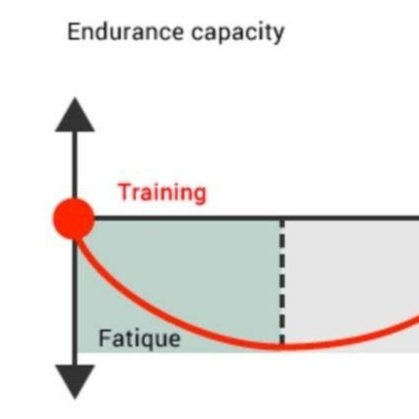
adventure blog
Ride stronger, heal smarter: Why motorcycle riders are turning to physiotherapy at Elios Health
Motorcycle riders in Vancouver trust physiotherapist and ICBC-certified instructor Len Chong at Elios Health. Whether you're prepping for your motorcycle license or recovering from a crash, Len combines expert rehab with real riding experience. Book now for motorcycle-specific treatment covered by ICBC.
Deloading in Climbing
Have you ever wondered why you are finally able to send your project after a few days of rest, rather than trying day-after-day?
This trend does not appear to be only exclusive to climbing but in other aspects of performance as well. Researchers in a 2003 study found that approximately two weeks of rest in weight-lifters actually increased their maximum squat and bench press weight.
This seems counterintuitive, is less really more?
Treatment for Neck Pain and Cervical Disc Herniation
Cervical disc herniation is a common source of cervical radiculopathy which may lead to sensory deficits, motor weakness, and/or radicular pain. The specific signs and symptoms of cervical vary based on which vertebral level is affected. This is because depending on where the herniation occurs, it will lead to compression of a different spinal nerve. The symptoms of cervical disc herniations are unique to each spinal nerve as each one innervates different muscles and areas of the body.
Learn more about neck pain and cervical vertebra health at our Main Street physiotherapy and massage clinic in Vancouver, BC
Pinching, Crimping, and Big-Wall Blues: De Quervain’s Tenosynovitis
De Quervain’s Tenosynovitis is a painful condition that affects the tendons at the base of the radial (thumb) side of the wrist. De Quervain’s Tenosynovitis occurs when the tendons at the base of the wrist become irritated or restricted. This condition is often linked to activities requiring repeated wrist movements or grasping including gardening, tennis, texting, golf, hammering, and rock climbing.
Prevention and Treatment of “Belayer’s Neck”
Belayer’s neck is a term climbers use to describe pain and stiffness in the back of the neck that occurs as a result of looking upwards and belaying for long periods of time. The term belayer’s neck isn’t a single diagnosis, but rather a colloquial term used to describe a wide range of conditions that cause the symptoms belayers often experience at the back of their necks.
Knee Pain While Squatting and 3 Tips to Prevent It!
The knee is designed to move through flexion and extensions and facilitate the squatting motion. For most people, it should not cause knee pain, however, knee pain while squatting is a very common complaint.
Usually, the issue stems from poor movement patterns when performing the exercise due to muscle imbalances, limited mobility, and poor form. When left unaddressed, these issues can lead to acute and chronic knee injuries.
3 Exercise to Improve Shoulder Stability
Rachel (Physio Beta) is at it again.
Enjoy three of her favourite exercises for improving shoulder stability.
Hint: one of them requires balance!
How to start running postpartum
Getting back into running postpartum can be a difficult task. Not only do new moms face complete changes to their daily routines but their muscles, joints and ligaments also go through drastic changes as well.
We would hardly expect injured athletes to be able to jump back into running at a pre-injury level and becoming a new mother is no different.
The following provides some information to consider when returning to running postpartum.
3 Phases of Rehab from Lateral Ankle Sprain
Oh no, a sprained ankle!
It’s one of the most frustrating times is when you just can’t “walk it off”.
Let’s take a look at what’s going on down there…
8 Signs of an ACL Injury
The ACL is the most commonly injured ligament in the knee and often affects younger, active individuals who participate in sports. Injuries to the ACL are usually caused by non-contact rotational forces such as sudden changes in direction, rapid stopping, jumping, and landing abnormally.
The Anterior cruciate ligament (ACL) is one of the key ligaments that act to stabilize the knee joint. The ACL connects your thighbone (femur) to the shin (tibia). Together with the posterior cruciate ligament (PCL), the ACL forms a cross-shaped band that prevents excessive forwards or backward movement of the shinbone relative to the thigh, as well as provides the knee with rotational stability.
6 Types of Manual Therapy that will Leave you Feeling Better
Manual therapy encompasses a range of techniques used by physiotherapists to assess and treat injuries and chronic conditions causing pain, stiffness, and reduced range of motion of the arms, legs, and spine. It involves hands-on treatments geared towards improving muscle function while minimizing pain.
Read on to learn more about the types of manual therapy, and who it helps!
What is a Rotator Cuff Tear?
What is a rotator cuff? What are people always talking about it? In fact, what makes it a “cuff”? Is it like a cuff link?
Ok, we are getting a little out of hand here.
Read on to learn more about the anatomy of the shoulder, and our three favourite exercises to prevent rotator cuff injuries!
What is Lateral Epicondylitis?
Lateral epicondylitis, or tennis elbow as it is more commonly known, is a painful condition of the elbow caused by overuse. As you may have guessed, tennis and other racquet sports are a common culprit of the injury, however, several other sports such as golf, baseball, martial arts, and rock climbing can also lead to the condition. Non-athletes can be prone to tennis elbow as well, and it is a common occurrence in painters, carpenters, musicians, and plumbers.
Let’s explore the anatomy of the elbow, and ways to address elbow pain.
Acute vs Chronic Injuries
How do you know if your pain is just something from last weekend's adventure or a sign of something more long-term? In this post we look at signs and symptoms of chronic and acute injuries, and what to do when you think it is something more than leftover stiffness.














